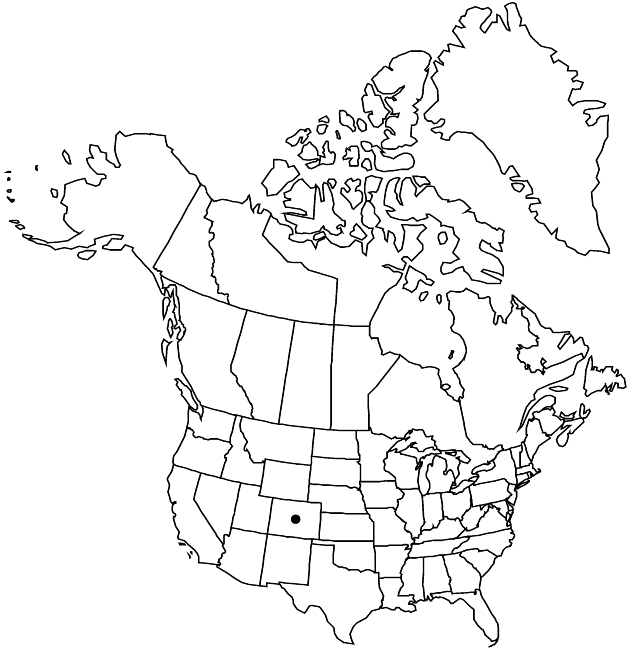Difference between revisions of "Townsendia rothrockii"
Rep. U.S. Geogr. Surv., Wheeler 6: 148. 1879.
FNA>Volume Importer |
FNA>Volume Importer |
||
| Line 33: | Line 33: | ||
-->{{#Taxon: | -->{{#Taxon: | ||
name=Townsendia rothrockii | name=Townsendia rothrockii | ||
| − | |||
|authority=A. Gray ex Rothrock | |authority=A. Gray ex Rothrock | ||
|rank=species | |rank=species | ||
| Line 48: | Line 47: | ||
|publication year=1879 | |publication year=1879 | ||
|special status= | |special status= | ||
| − | |source xml=https://jpend@bitbucket.org/aafc-mbb/fna-data-curation.git/src/ | + | |source xml=https://jpend@bitbucket.org/aafc-mbb/fna-data-curation.git/src/eaa6e58056e40c9ef614d8f47aea294977a1a5e9/coarse_grained_fna_xml/V19-20-21/V20_448.xml |
|tribe=Asteraceae tribe Astereae | |tribe=Asteraceae tribe Astereae | ||
|genus=Townsendia | |genus=Townsendia | ||
Revision as of 20:28, 16 December 2019
Perennials, 1–3 cm (± pulvinate). Stems ± erect; internodes 0.1–1+ mm, glabrous or ± strigose. Leaves basal and cauline, ± spatulate to oblanceolate, 10–35 × 2–7 mm, ± fleshy, faces sparsely strigose or glabrous. Heads ± sessile or on peduncles 5–25+ mm. Involucres ± hemispheric, 12–28+ mm diam. Phyllaries 40–60+ in (3–)4–5+ series, the longer obovate to oblanceolate, 7–9+ mm (l/w = 2.5–5), apices obtuse to acute, abaxial faces glabrous. Ray florets 18–40; corollas blue to purplish adaxially, laminae 8–16 mm, glabrous abaxially. Disc florets 60–100+; corollas 3.5–4.5+ mm. Cypselae 4 mm, faces nearly glabrous (discs) or sparsely hairy (ray, hairs mostly at bases), hair tips glochidiform; pappi persistent; on ray cypselae 12–20 lanceolate to subulate scales 0.5–1.5 mm; on disc cypselae 15–30 subulate to setiform scales 3–6 mm. 2n = 36 (apomicts).
Phenology: Flowering Aug.
Habitat: South slopes
Elevation: 3600–4000 m
Discussion
Of conservation concern.
The types of Townsendia rothrockii and T. glabella may be conspecific.
Selected References
None.
